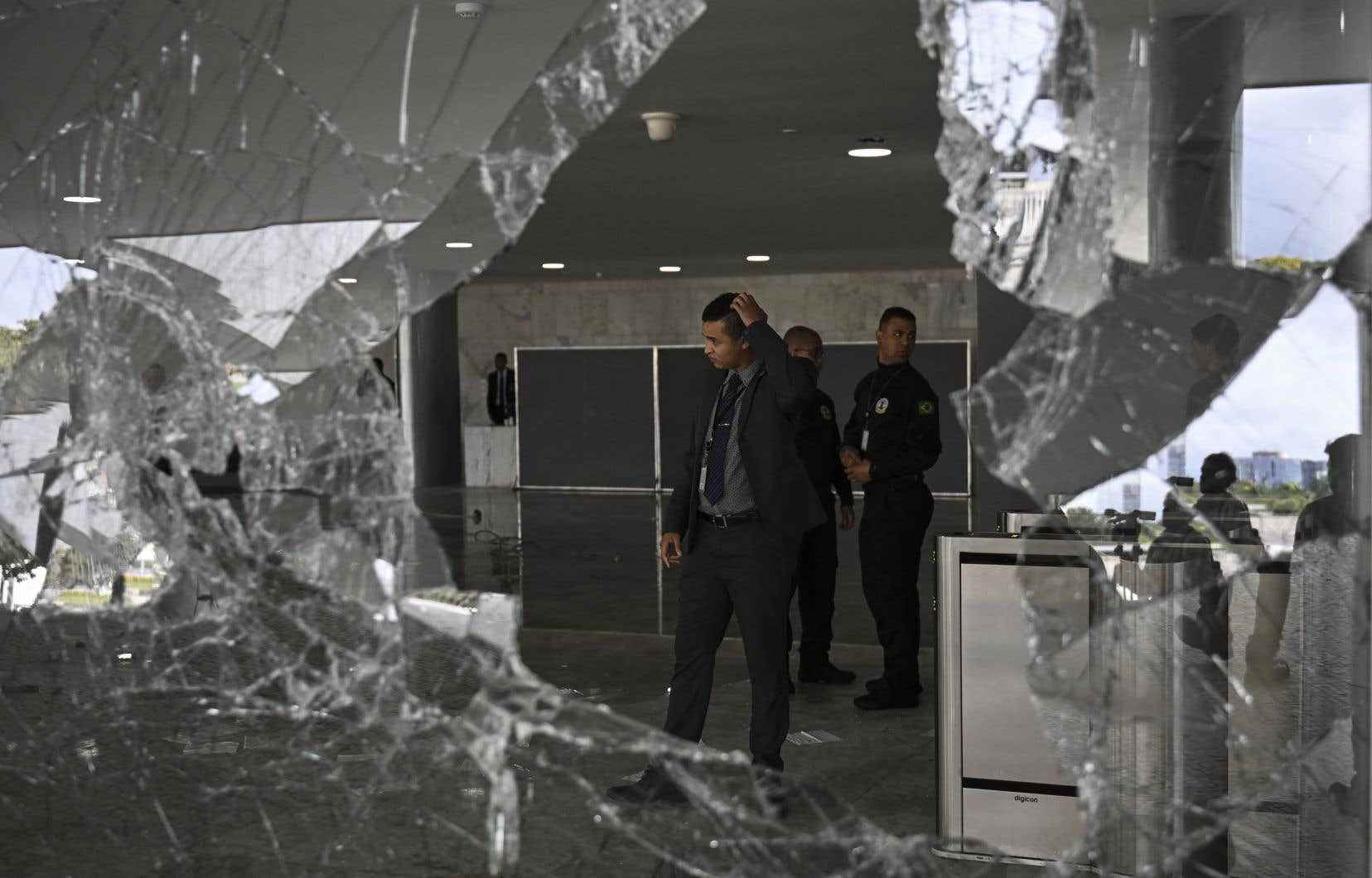At the entrance to the presidential palace of Planalto, in Brasília, a hole in the stone floor, broken windows and furniture immersed in a basin testified Monday to the rampages carried out the day before by unleashed Bolsonarists.
Some 12 hours after thousands of violent protesters invaded places of power in the capital, a lingering smell of tear gas hung in the air.
Soldiers hoisted the colors on the mast opposite the presidential palace, to regain some semblance of normality, while on the ground still lay the projectiles launched at the police and the tear gas canisters used by the police to clear the protesters.
Cleaning teams were sweeping up the broken glass and recovering chairs and other pieces of furniture left in front of the entrance or thrown into the basin of the modern movement building, the work of the famous Brazilian architect Oscar Niemeyer, noted an AFP journalist. .
Employees of the presidency also saw the damage.
“I cried about it,” admitted a civil servant who was returning to work on Monday, as requested by President Luiz Inácio Lula da Silva, who met in the morning with the presidents of the Senate, the Chamber of Deputies and of the Supreme Court in the Planalto, where his office was not reached by the rioters.
In a joint statement, they condemned “terrorist acts, vandalism, criminals and putschists”.
On Sunday, thousands of supporters of former far-right President Jair Bolsonaro invaded the Place des Trois Pouvoirs, where the presidential palace, the Congress and the Supreme Court meet.
Convinced that the October presidential victory was “stolen” from them by the left, they refuse to recognize Luiz Inácio Lula da Silva as their new president.
After blocking roads, and camping in front of barracks to ask for the support of the army to overthrow the democratically elected power, they poured out their anger and frustration by ransacking these public buildings.
“Attack on Democracy”
Barriers were used as rams to break the windows of the presidential palace, stones were unsealed to serve as projectiles on the police, but also on the windows of the building, which bear numerous impacts.
Graffiti reading “New Constitution” or “Intervention [militaire] are still visible on those that have not ended up in pieces. “Corrupt parliament” and “Power comes from the people” were written in marker on pillars of the building.
In the entrance hall of the Planalto lie among the broken glass of the computers of the reception service. The X-ray detection machines were damaged as well as the security turnstiles.
The glass portraits of all the presidents of Brazil that were displayed on a marble wall also lie on the ground, broken.
Identification experts took fingerprints on Monday morning while workers took measurements of the damaged windows to replace them.
Traces of blood still remained in the offices on the ground floor, according to an official. And in an adjoining room, the painting mulattoesby the modernist painter Di Cavalcanti, featured holes that would have been made with a knife.
The presidential palace houses more than a hundred paintings and sculptures, as well as furniture by Niemeyer himself. “They are practically all damaged,” whispered an official who requested anonymity.
Similar damage was observed at the adjoining Congress: broken windows on the floor, computer equipment hanging from broken furniture. The front door of the Senate no longer exists.
In the hall, where Lula paraded during the transfer of power on 1er January, cleaners mopped the floor. The huge room, which faces the ramp through which pro-Bolsonaro supporters entered, was flooded when tear gas canisters fired at protesters activated the fire-fighting device.
“It’s a tragedy,” proclaims Tiago Amaral, a 34-year-old civil servant in the office of Senator Jaques Wagner, an ally of Lula.
“It is a destruction of public heritage, of wealth stored in these buildings. But it goes much further: it is an attack on democracy, like the one we last saw in 1964 with the military coup. »
